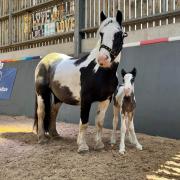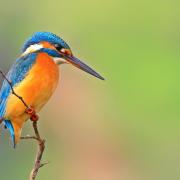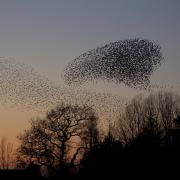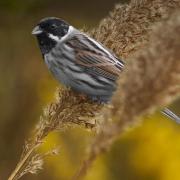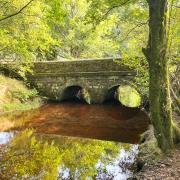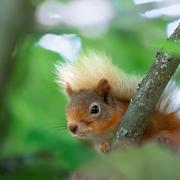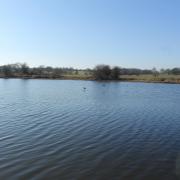We go in search of one of our rarest reptiles, a creature that would look more at home on a Caribbean beach. Lancashire Wildlife Trust’s Molly Toal investigates

If you walk through Freshfield Dune Heath in Sefton, you’ll find red squirrels scampering through the woodland, goldcrests flitting through branches and heather and gorse blooming in the dune heath. This stunning eight hectare nature reserve, owned by The Lancashire Wildlife Trust, accounts for nine per cent of the UK’s overall lowland dune heath habitat, making it a very rare site.
Its conservation is of real importance, as a huge variety of plants, mammals, birds, invertebrates and reptiles have made themselves at home here – including one of the north west’s rarest inhabitants, the sand lizard. They are beautiful animals, much stockier than common lizards and able to grow to 20cm long. Both males and females have varied rows of brown blotches running from the tip of the head down along their back but, aside from this feature, they are simple to tell apart. The female is a pleasant sandy-brown colour, making her well camouflaged among the dunes and heathland. In contrast, the male sand lizard has beautiful green flanks which are incredibly bright and noticeable during the lizards’ breeding season from late April to May. So distinctive are these male lizards that they look as if they should belong in a tropical climate rather than the sandy soils of the Sefton coast.
In June and July, the female sand lizard lays eggs in loose sand in a sunny location.
The parents do not incubate the eggs themselves, relying on the warmth of the ground and the sun. The baby lizards hatch after a month or two.

Sand lizards are not particularly hands-on parents so the young are independent from early on.
As cold-blooded creatures, they rely on the morning sun to raise their internal body temperature and stimulate their metabolism. They are active during the daytime from April until October, after which they hibernate. At night, they dig a little burrow in sandy soil to sleep. The entrance is usually concealed in the undergrowth and turns sharply after just a few centimetres so that, once inside, the lizard is completely hidden. The best time to see them is in the early morning, basking on exposed sand or rocks; they won’t be fully warmed up so will be sluggish and less likely to run. It’s also best to tread lightly, as reptiles are sensitive to vibrations.
Sand lizards are carnivores and prey on invertebrates like grasshoppers, spiders and even bees. They have excellent eyesight and powerful tongues that allow them to grab their food without getting a nip or sting in retaliation. However, they are vulnerable to larger predators such as birds of prey, cats and foxes, especially when they are in a lethargic state.
Unfortunately, the biggest danger is from the loss of wild spaces like Freshfield Dune Heath that offer open, undisturbed sand dunes and lowland heathland habitats in which they live. Habitat destruction, whether through heath fires or clearance for housing developments, has caused numbers to plummet and the species is now confined to only a few sites across the UK. Thankfully, reintroduction programmes have helped to restore sand lizards to some of their former ranges – including at Freshfield Dune Heath. With help from Amphibian and Reptile Conservation, The Lancashire Wildlife Trust were able to reintroduce them to the nature reserve in 2010 and 2011. Captive-bred lizards were released to join up with the existing population further along the Sefton coast. Nearly ten years on, conservation work by our dedicated staff and volunteers, alongside support from our members, has helped the lizards to survive.

Next time you head out for a walk in nature why not visit Freshfield Dune Heath and see if you can spot any sand lizards for yourself?
For more information about nature reserves managed by the Trust visit www.lancswt.org.uk/nature-reserves.




